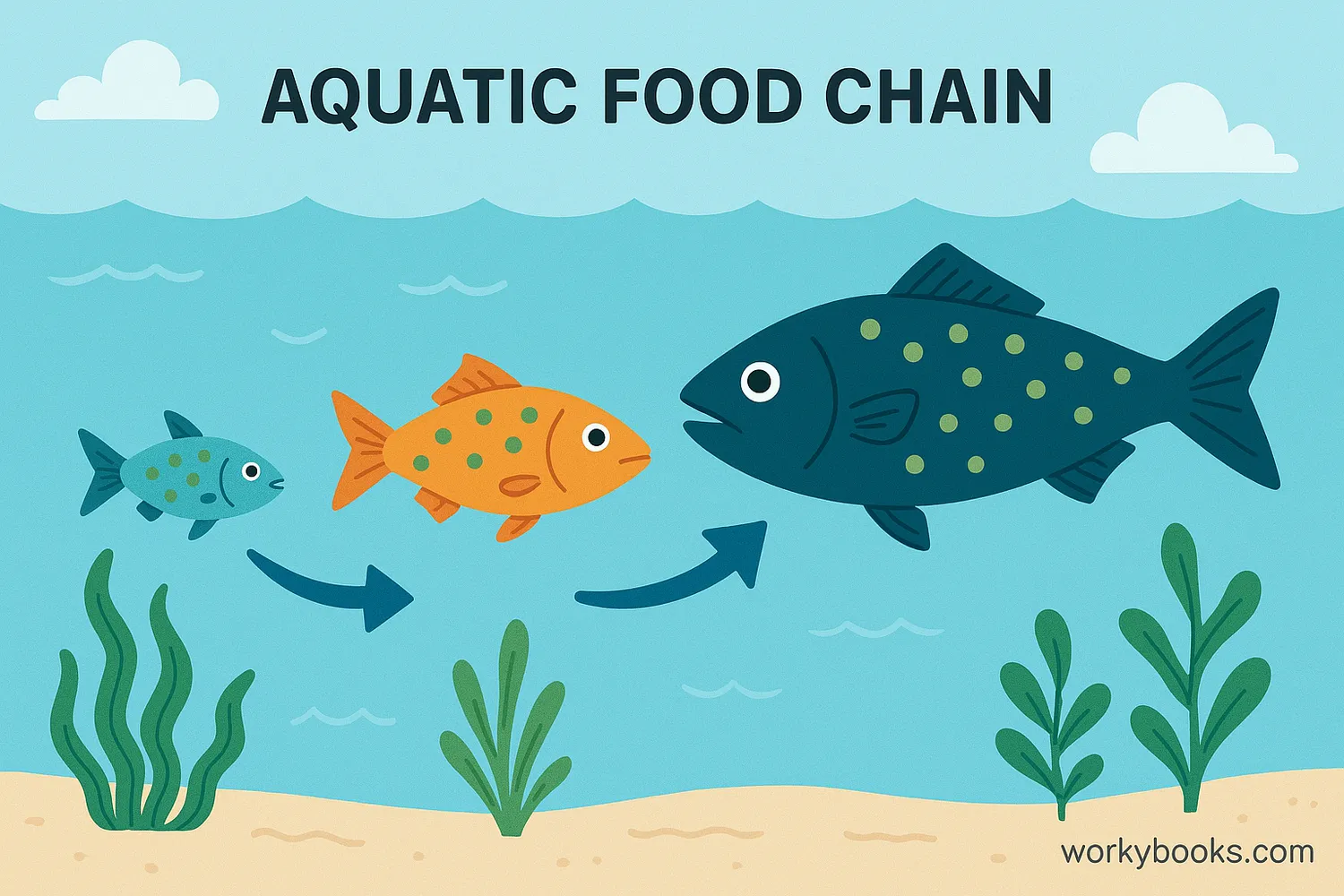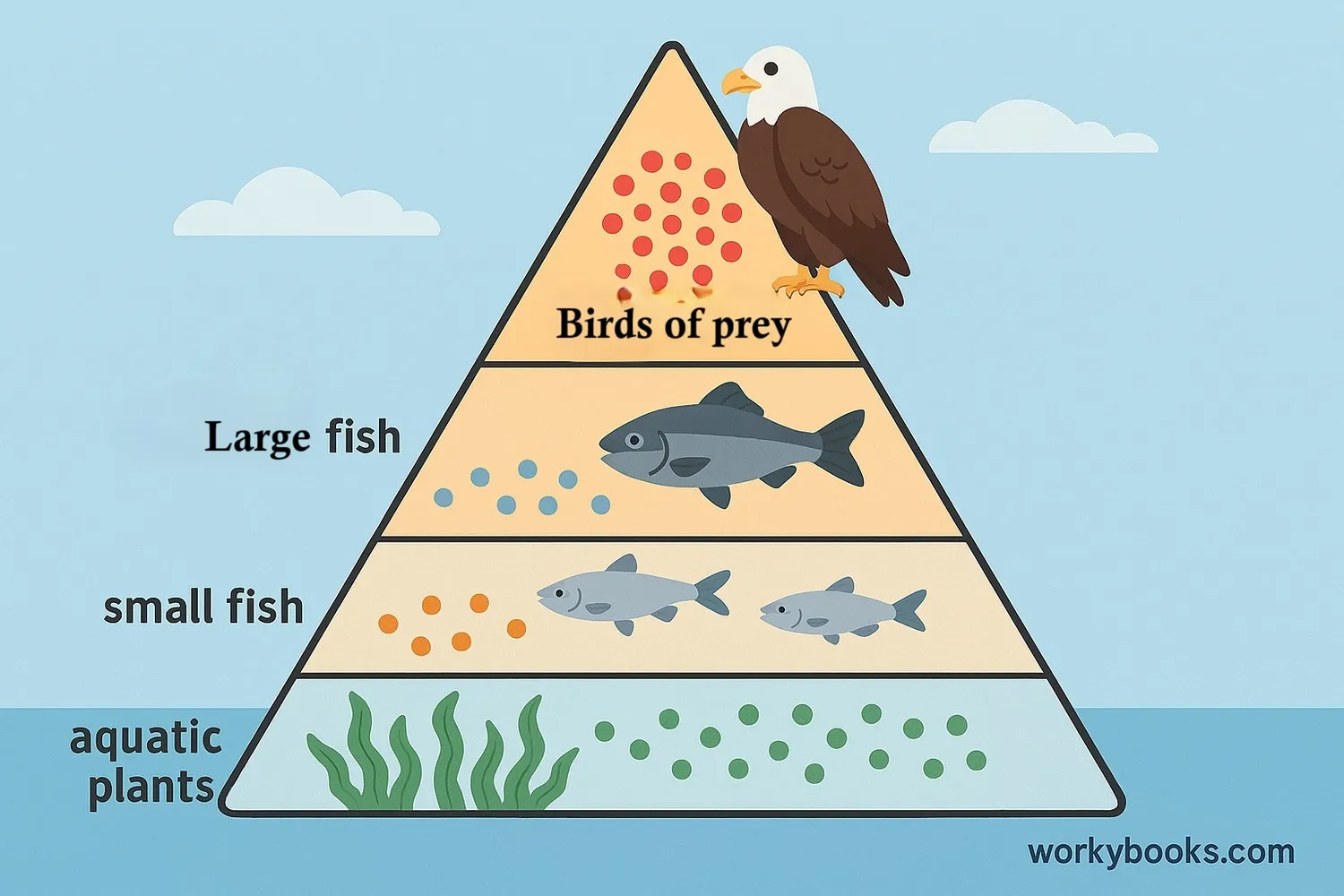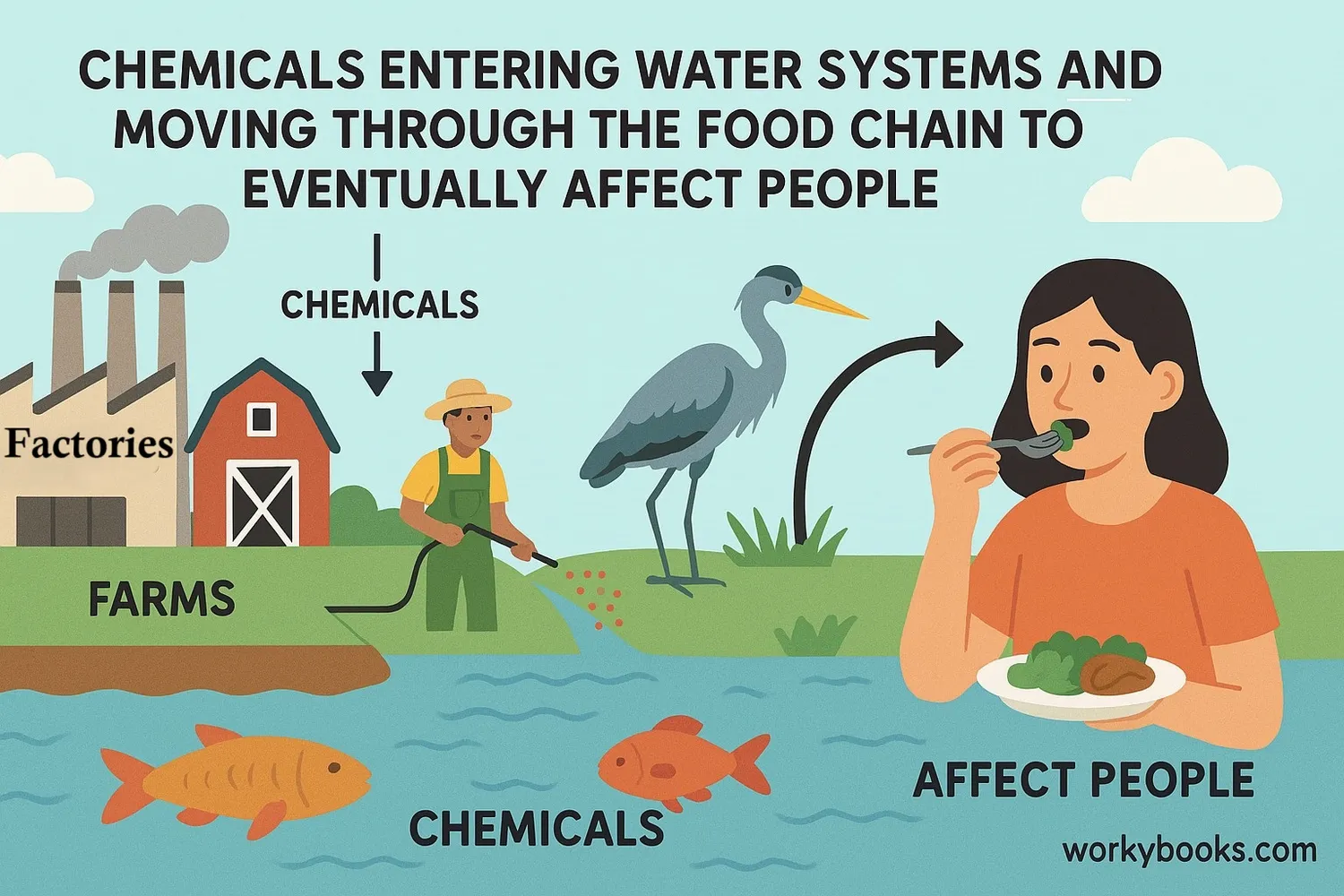Biomagnification - Definition, Examples, Quiz, FAQ, Trivia
Discover how chemicals concentrate as they move through food chains
What is Biomagnification?

Biomagnification is a process where harmful chemicals become more concentrated as they move up through the food chain. It's like a magnifying glass that makes tiny amounts of pollution in small organisms become large amounts in top predators.
Imagine a tiny bit of chemical in the water being eaten by plankton. Small fish eat many plankton, collecting all those chemicals. Then bigger fish eat many small fish, collecting even more chemicals. By the time it reaches the top predator (like an eagle or shark), the chemical concentration can be thousands of times higher than in the water!
Key Term: Bioaccumulation
Bioaccumulation is when an organism collects chemicals from its environment. Biomagnification is when these chemicals become more concentrated at each step of the food chain.
How Biomagnification Works

Biomagnification happens because of how energy moves through ecosystems. Here's the step-by-step process:
Chemical Release
Pollutants enter water or soil from human activities
Uptake
Small organisms absorb or consume the chemicals
Consumption
Small predators eat many contaminated organisms
Accumulation
Chemicals build up in predators' bodies over time
Magnification
Top predators accumulate the highest concentrations
The chemicals that biomagnify are usually persistent organic pollutants (POPs). These don't break down easily and can stay in the environment for years. They're also fat-soluble, meaning they store in animal fat instead of being excreted.
Real World Example
DDT pesticide caused eagle populations to decline because it made their eggshells too thin. Though there was little DDT in the water, it biomagnified in fish that eagles ate.
Why Biomagnification Matters

Understanding biomagnification helps us protect ecosystems and human health. Here's why it's important:
Ecosystem Health
Biomagnification can harm top predators and disrupt entire food webs
Human Health
People can be exposed through contaminated food, especially seafood
Environmental Protection
Understanding biomagnification helps us make safer chemicals and regulations
By studying biomagnification, scientists can:
• Identify dangerous chemicals before they cause widespread harm
• Protect endangered species that might be affected
• Create guidelines for safe chemical use and disposal
• Help fishing communities avoid contaminated areas
Even small amounts of pollution can become big problems through biomagnification, which is why it's so important to prevent chemical pollution in the first place.
Biomagnification Quiz
Test your knowledge about biomagnification with this quiz! Answer all 5 questions to see how much you've learned.
Frequently Asked Questions
Here are answers to some common questions about biomagnification:
Interesting Biomagnification Facts
Discover some fascinating information about biomagnification:
Historical Discovery
Scientists first understood biomagnification when studying why birds of prey were declining in the 1950s-60s. They traced the problem to DDT pesticide that was magnifying through food chains.
Polar Problems
Biomagnification happens even in the Arctic! Pollutants travel long distances through air and water currents, then magnify in food chains despite being far from where they were used.
Mercury Concern
Mercury from coal power plants and other sources converts to methylmercury in water, which strongly biomagnifies. This is why some fish have consumption advisories.
Natural Solutions
Some wetlands plants can absorb and break down pollutants before they enter food chains, acting as natural filters that help prevent biomagnification.


